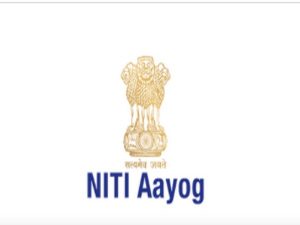Today Current Affairs:29th June 2022 for UPSC IAS exams, State PSC exams, SSC CGL, State SSC, RRB, Railways, Banking Exam & IBPS, etc
Table of Contents
Performance Grading Index For Districts (PGI-D):

The Department of School Education and Literacy (DoSE&L), Ministry of Education (MoE) released the Centre’s first-ever Performance Grading Index for Districts (PGI-D) for 2018-19 and 2019-20.
- In June, 2021, the Union Education Minister has approved the release of Performance Grading Index (PGI) 2019-20 for States and Union Territories.
- PGI-D assesses the performance of the school education system at the district level by creating an index for comprehensive analysis.
- The PGI-D assessed district-level performance in school education based on the data collected from various sources, including Unified District Information System for Education Plus (UDISE +), National Achievement Survey (NAS), 2017 and data provided by respective districts.
Key Highlights of the Report:
Best Performers:
- Three districts from Rajasthan performed the best in the assessment.
- According to the report, the three districts — Sikar, Jhunjhunu, and Jaipur figured in ‘Utkarsh’ grade in 2019-20 in contrast to a year before when no district featured in that category.
- Rajasthan has the highest 24 districts in this grade, followed by Punjab (14), Gujarat (13), and Kerala (13).
Lowest Performers:
- The districts with the lowest scores (1 out of 50) in this category were:
- South Salmara-Mankachar (Assam), Alirajpur (Madhya Pradesh), North Garo Hills and South Garo Hills in Meghalaya, and Khowai (Tripura) in 2019-20.
- The 12 states/ UTs which don’t have a single district in the Ati-Uttam and Uttam are:
- Bihar, Goa, Jammu and Kashmir, Arunachal Pradesh, Manipur, Meghalaya, Mizoram, Nagaland, Sikkim, Tripura and Uttarakhand.
Issue With The Juvenile Justice Amendment Act, 2021:

The Juvenile Justice Act Amendment is making it harder to report abuse at child care institutions by making abuse and cruelty by staffers or persons in-charge at Child Care Institutions (CCI) non-cognisable.
- The Juvenile Justice (Care and Protection of Children) Amendment Act, 2021 was passed to amend various provisions of the Juvenile Justice Act, 2015.
Provisions of Juvenile Justice (Care and Protection) Amendment Act 2021:
- Crimes against children which are mentioned in the chapter “Other Offences Against Children” of the JJ Act, 2015 that allow an imprisonment between three and seven years will be deemed “non-cognisable”.
- The amendment provides strength to the provision of protection and adoption of children.
- There are many adoption cases pending before the court and to make proceedings of the court faster now the power is transferred to the district magistrate.
- Amendment provides that the district magistrate has the authority to issue such adoption orders.
- The amendment under challenge is the one to Section 86 of the JJ Act, according to which crimes under the special law, with punishment between three to seven years, have been reclassified as non-cognisable.
- While the victims themselves are unable to directly report them due to the imbalance in power, most such crimes are reported to the police by either parents or child rights bodies and Child Welfare Committees (CWC).
- Parents of these Children: They are mostly daily wage labourers, are either unaware of how to, or not inclined to report the crimes to the police.
- They do not want to engage with the legal process because that would force them to take time off from work, resulting in loss of wages.
- Child Welfare Committees (CWC): CWCs’ first instinct in most cases is to “talk and arrive at a settlement” without having to escalate the matter to the police.
- Making these crimes non-cognisable along with several other serious crimes under the special law would make reporting an offence to the police even more difficult.
India-Malaysia Defence Cooperation:

Indian Defence Minister interacted with his Malaysian counterpart to deepen Defence Cooperation between the two countries.
- The Malaysian air force has been looking for 18 new light fighter jets with several nations, including South Korea, Pakistan, China and Sweden, making a pitch. The Indian offer is for the LCA Mk1A version.
- India has offered a dual package for the indigenous fighter jets as well as maintenance of the Russian origin Su30 MKM aircraft being operated by Malaysia.
Highlights of the Meeting:
- Both countries highlighted the areas in which Indian defence industries could assist Malaysia. India invited senior officers from Malaysia to India to get a first-hand experience of the facilities and products of Indian defence industry.
- Malaysia expressed the need for inducting women personnel in peace keeping missions. Both sides agreed to engage each other on this issue.
- Both countries agreed to upgrade capability for Humanitarian Assistance and Disaster Relief (HADR) operations.
- Both sides discussed the existing defence cooperation activities and framework between the two countries, and ways to further enhance them under the existing Malaysia India Defence Cooperation Meeting (MIDCOM) framework.
- The next MIDCOM is scheduled to held in July 2022, and it was decided to use this platform for a deeper engagement in defence.
Bharat NCAP:

The Ministry of Road Transport and Highways has approved the draft GSR (General Statutory Rules) notification to introduce Bharat NCAP (New Car Assessment Programme).
- NCAP will be rolled out from 1st April 2023 and will mean auto manufacturers in India as well as importers will have the option of getting cars star rated within country.
- The USA was the first country to introduce a programme for testing the safety standards of a car through crash tests.
- Bharat NCAP is a new car safety assessment program which proposes a mechanism of awarding ‘Star Ratings’ to automobiles based upon their performance in crash tests.
- Bharat NCAP standard is aligned with global benchmarks and it is beyond minimum regulatory requirements.
- The proposed Bharat NCAP assessment will allocate Star Ratings from 1 to 5 stars.
- The testing of vehicles for this programme will be carried out at testing agencies, with the necessary infrastructure.
- It will be applicable on type approved motor vehicles of category M1 with gross vehicle weight less than 3.5 tonnes, manufactured or imported in the country.
- M1 category motor vehicles are used for the carriage of passengers, comprising eight seats, in addition to driver’s seat.
OPERATION Sankalp:

Indian Navy’s stealth Frigate, INS Talwar is presently deployed for OPERATION Sankalp commemorating the 3rd continuous year of Indian Navy’s presence in the Gulf for protection of India’s Maritime Interests.
- In the milieu of the deteriorating security situation in the Gulf region, post attacks on merchant ships in the Gulf of Oman in June 2019, Indian Navy had commenced Maritime Security Operations, code named ‘Op SANKALP’, in the Gulf Region on 19 June 2019 to ensure safe passage of Indian Flag Vessels transiting through the Strait of Hormuz.
- This operation is being progressed in close coordination with all stakeholders including Ministry of Defence, Ministry of External Affairs, Ministry of Shipping, Ministry of Petroleum and Natural Gas and DG, Shipping.
840 Squadron:

The Indian Coast Guard Region (East) inducted the Advanced Light Helicopter (ALH) Mark-III, indigenously developed by Hindustan Aeronautics Ltd (HAL), in Chennai.
- The ALH will be the first aircraft of the newly created “840 Squadron” of The Indian Coast Guard that will be stationed in Chennai and will be the first ALH MK-III to be positioned in the Coast Guard Region East.
- Three more ALHs will be added to the “840 Squadron” shortly.
- The aircraft are having Beyond the Visual Range detection, using modern radars. It is equipped for target neutralisation operations, using its mounted Heavy Machine Gun.
- The squadron’s operations area will encompass the entire Eastern Region due to its strategic importance and geographical location.
Chief Executive Officer Of NITI Aayog:

Retired IAS officer and former Drinking Water and Sanitation Secretary Parameswaran Iyer has been appointed as the new Chief Executive Officer of Niti Aayog.
- Parameswaran Iyer, a senior officials who helmed Prime Minister Narendra Modi’s pet scheme, Swachh Bharat Abhiyan, will be the new Chief Executive Officer (CEO) of the NITI Aayog.
- The Appointments Committee of the Cabinet cleared his name for the post.
- At present, Mr. Iyer functions as the Programme Manager of the 2030 Water Resources Group, a platform hosted by the World Bank for water conservation.
- Mr Iyer will succeed Amitabh Kant who is completing tenure on 30th of this month. Mr. Iyer will get at least two years in the post.
- Kant was appointed CEO of the National Institutions for Transforming India (NITI) Aayog on February 17, 2016, for two years.
- He got three extensions during his tenure. Under Mr. Kant, the NITI Aayog helped the Centre launch several programmes such as Digital India and Make in India.
Invasive Weeds:

A Vitamin D3-rich weed and a shrub with roots that wild boars love to gorge on are among the 18 invasive plants stifling the Kaziranga National Park and Tiger Reserve, the best-known address of the greater one-horned rhinoceros on the Earth.
- The list released by the Wildlife Institute of India (WII) did not contain the “usual culprits” of many protected areas in India – parthenium and lantana that threaten more than 40% of India’s tiger reserves, according to a global study in 2020.
- It did mention ipomoea (Ipomoea carnea) and mimosa (Mimosa himalaica) but marked them as largely controlled and not much of a worry now.
- Parthenium (Parthenium hysterophorus) is believed to have come to India as contaminants in a consignment of wheat imported from the U.S. in the 1950s while lantana (Lantana camara) was brought by the British as ornamental plants from South America two centuries ago.
- Some weeds have herbal properties, but their toxicity outweighs their utility.
- For instance, wild boars love to gorge on the succulent rootlets of the Leea macrophylla or ‘kukura thengia’ that is fast clogging the patrolling paths and grasslands.
- Another one is the Cestrum diurnum or day-blooming jasmine of West Indies origin “coming up gregariously” on the Brahmaputra sandbars.
- The plant is otherwise a source of Vitamin D3.
Report On India’s Gig Workforce : Niti Aayog

NITI Aayog has recommended steps to provide social security for the country’s gig workforce, which is expected to grow to 2.35 crore by 2029-30.
- According to a study released by NITI Aayog, the number of gig workers is estimated to be 77 lakh in 2020-21.
Key findings of the report:
- Platformization of work: It has given rise to a new classification of labour-platform labour, falling outside of the purview of the traditional dichotomy of formal and informal labour.
- The report broadly classified gig workers into:
- Platform workers: are those whose work is based on online software applications or digital platforms,
- Non-platform gig workers: are generally casual wage workers and own-account workers in the conventional sectors, working part-time or full-time.
- More medium-skilled jobs: At present, about 47% of gig work is in medium-skilled jobs, about 22% in high-skilled, and about 31% in low-skilled jobs, the trend shows the concentration of workers in medium-skilled jobs is declining and that of the low skilled and high skilled is increasing.
- Increase in the non-agricultural workforce: By 2029-30, gig workers are expected to form 7% of the non-agricultural workforce or 4.1% of the total livelihood workforce in India.
What Is Permian extinction?

Scientists from Stanford University, warn of imminent mass annihilation of marine species similar to the Permian extinction (250 million years ago) that wiped out most lives in oceans
- Permian extinction (or the “Great Dying”) was caused by global warming that left ocean animals unable to breathe.
- Roughly 96 per cent of marine species and 70 per cent of land species went extinct.
- Permian Era: During this period, land masses collided to form the supercontinent Pangaea. The supercontinent was arid; only a few parts received rainfall round the year.
- However, the large Panthalassic Ocean, which covered much of Earth, was home to many marine species
- Reason Of extinction:
- Towards the end of the era, a series of volcanic eruptions occurred in central Siberia, injecting massive amounts of greenhouse gases (GHG) into the atmosphere. Then, as of now, the uncontrolled GHG emissions triggered climatic changes.




